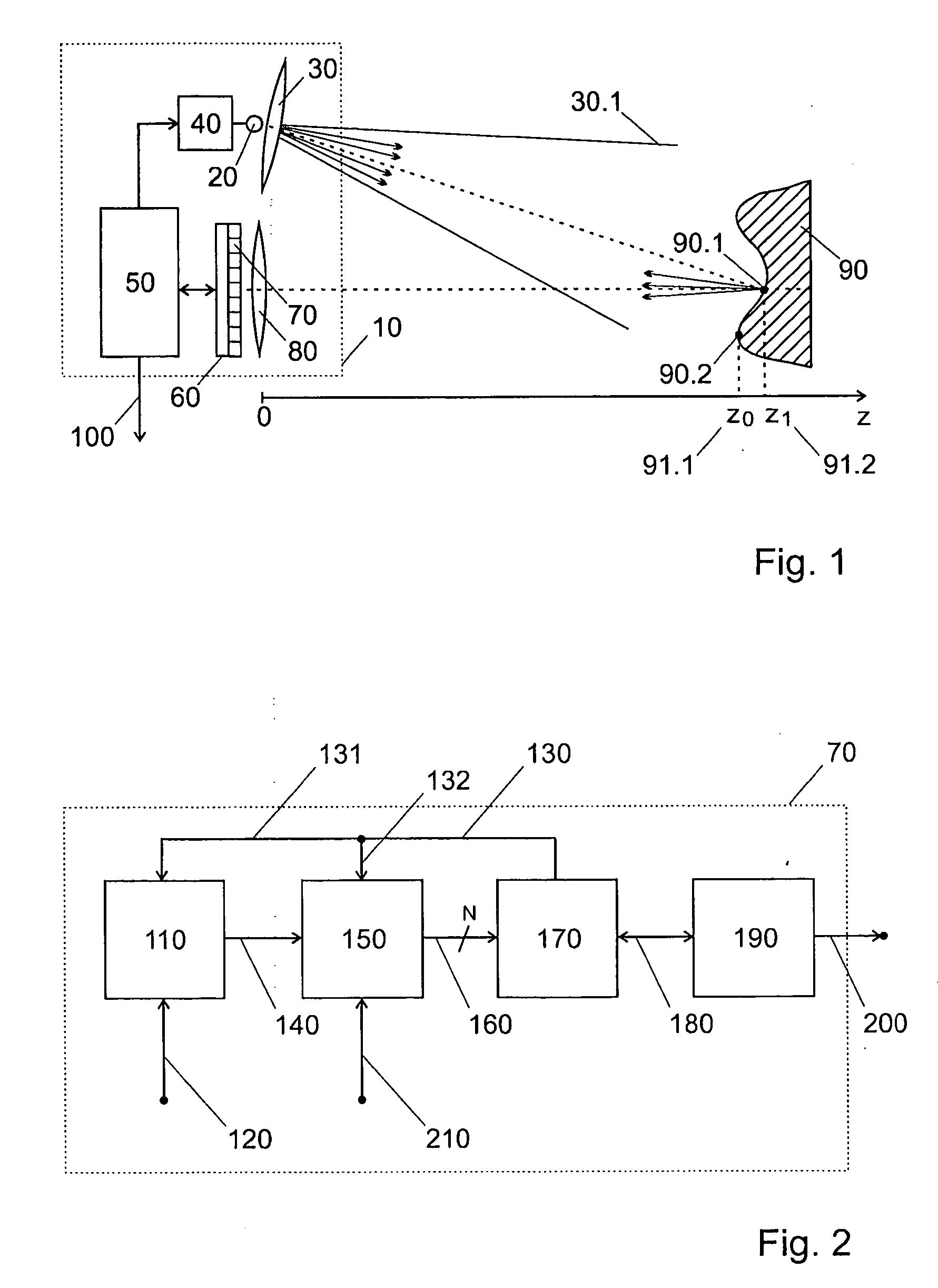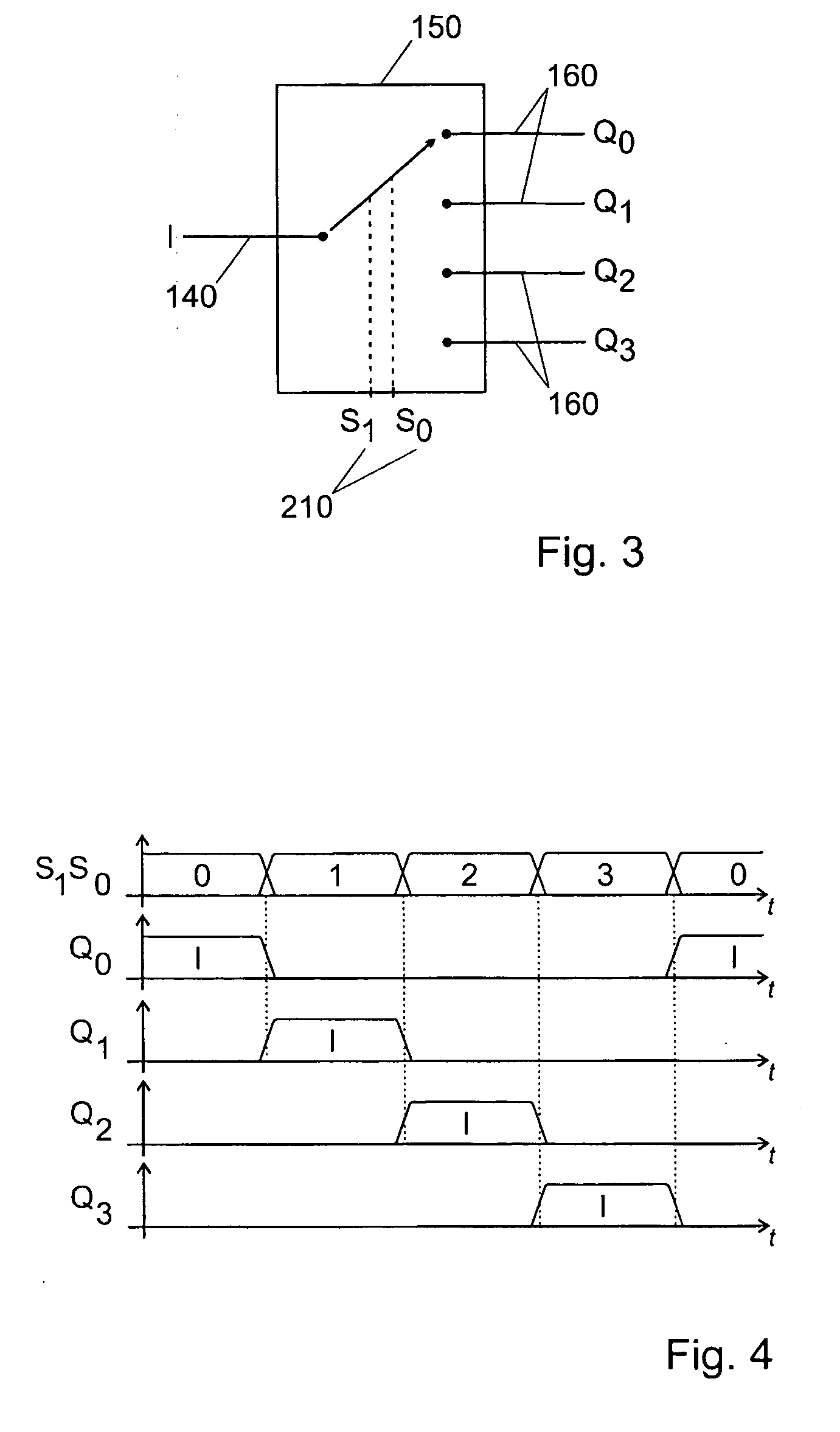Method and arrangement for measuring the distance to an object
a distance measurement and object technology, applied in distance measurement, height/levelling measurement, instruments, etc., can solve the problems of preventing battery-powered systems from being used, severely limited maximum achievable demodulation frequency, and large amount of power dissipation
- Summary
- Abstract
- Description
- Claims
- Application Information
AI Technical Summary
Benefits of technology
Problems solved by technology
Method used
Image
Examples
Embodiment Construction
[0047] The present invention proposes a realization method of a solid-state rangefinder imager sensor comprising avalanche photodiodes (APD), and a continuous-modulated illumination scheme.
[0048]FIG. 1 illustrates an example of realization of an arrangement according to the present invention. The arrangement 10 includes a light source 20, light source optics 30 used to create a cone of light 30.1, a light source driver 40, a controller 50, a solid-state image sensor 60 comprising an array of pixels 70 based on avalanche photodiodes and an imaging lens 80. The light source 20, based for example on an array of LEDs or DLs, emits a periodic continuous modulated optical signal with frequency F and duty cycle close to 50%. The light source optics, usually an optical diffuser and / or a lens, creates a cone of light 30.1 that illuminates an object 90 in the scene. Different points of the object, such as 90.1 and 90.2, are imaged on different pixels on the imager sensor 60 by means of an im...
PUM
 Login to View More
Login to View More Abstract
Description
Claims
Application Information
 Login to View More
Login to View More - R&D
- Intellectual Property
- Life Sciences
- Materials
- Tech Scout
- Unparalleled Data Quality
- Higher Quality Content
- 60% Fewer Hallucinations
Browse by: Latest US Patents, China's latest patents, Technical Efficacy Thesaurus, Application Domain, Technology Topic, Popular Technical Reports.
© 2025 PatSnap. All rights reserved.Legal|Privacy policy|Modern Slavery Act Transparency Statement|Sitemap|About US| Contact US: help@patsnap.com



